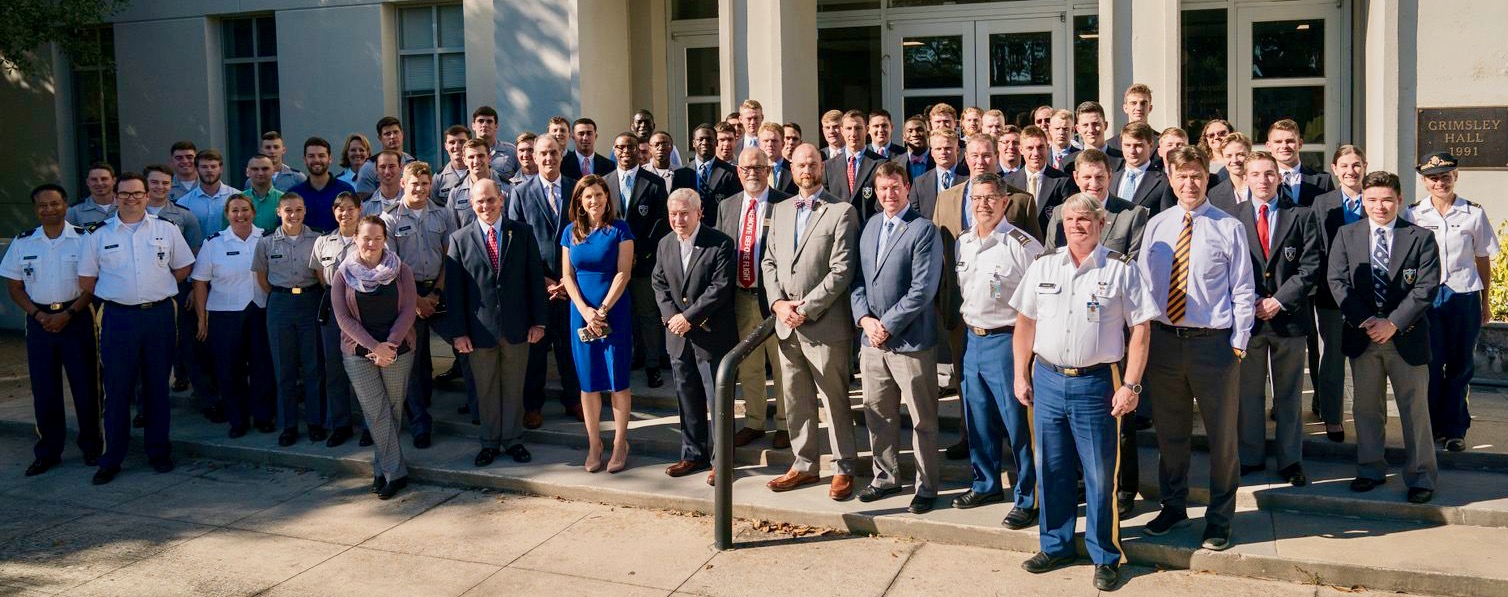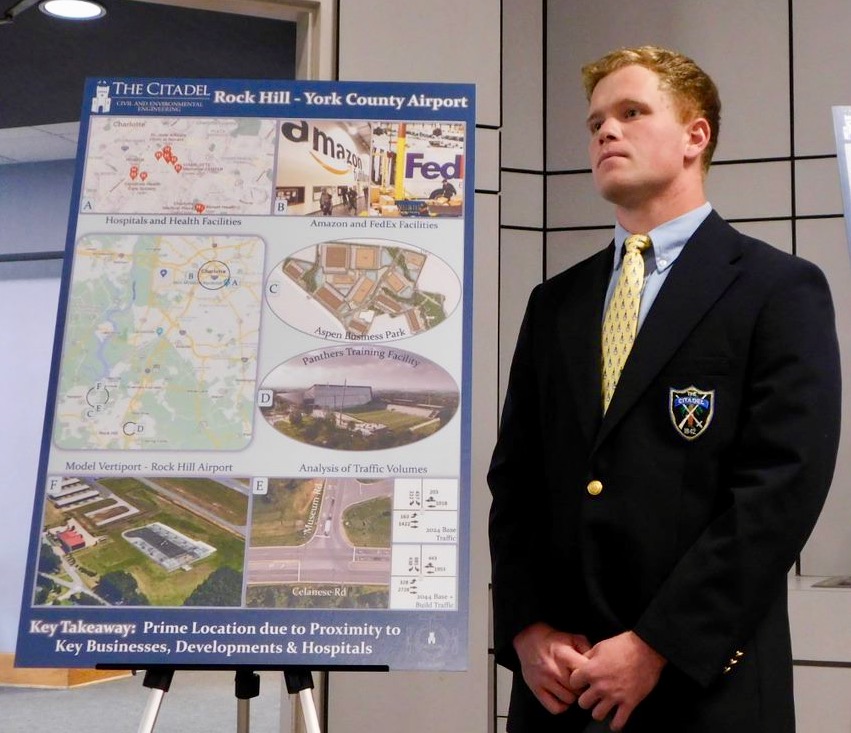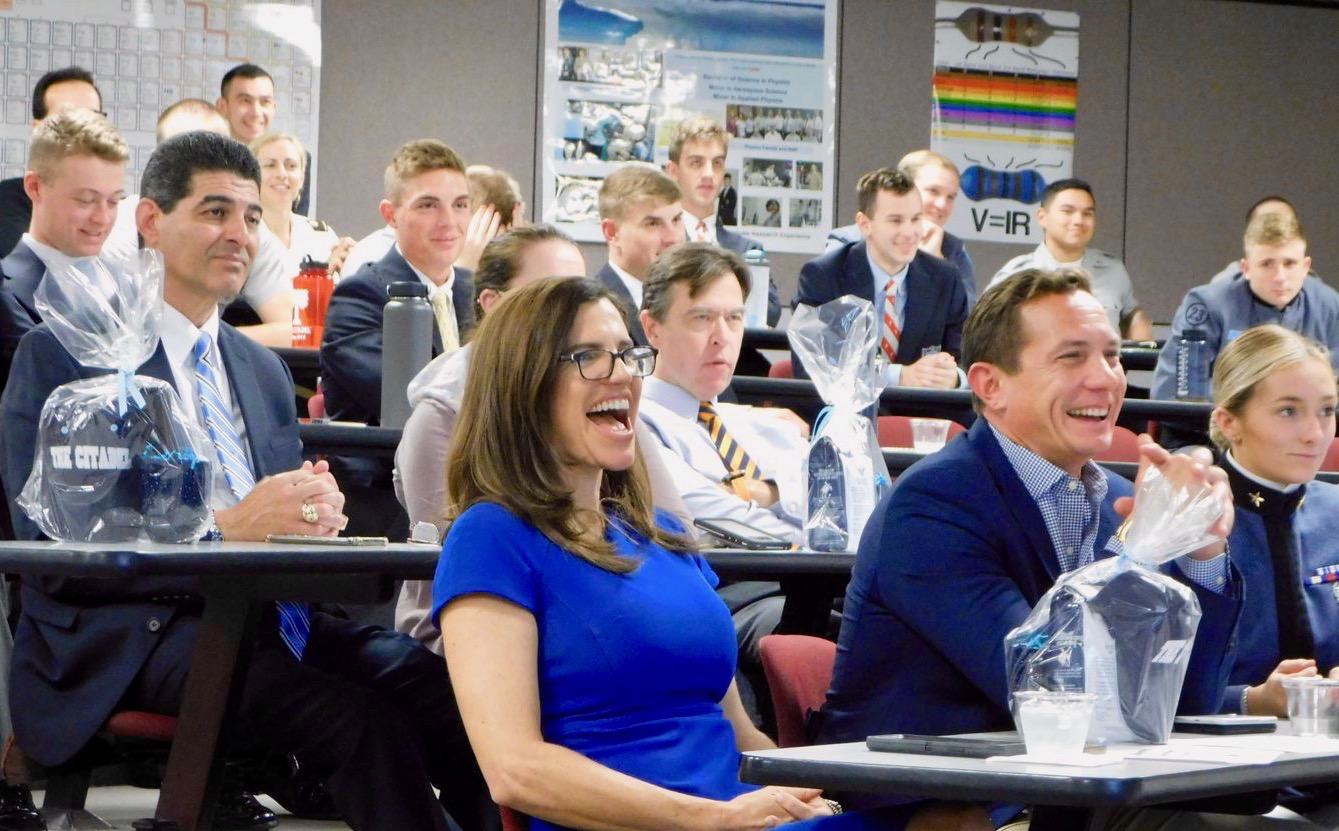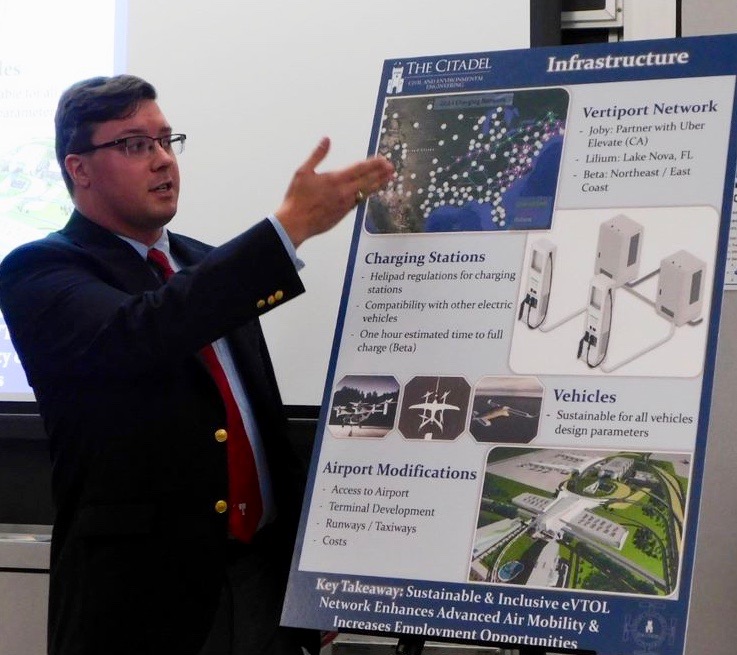222 Palisades Creek Drive
Richardson, TX 75080
Phone: 972-952-9393
Fax: 972-952-9435
Email: [email protected]
Project: Designing Advanced Air Mobility Infrastructure: Multidisciplinary Capstone Project
Project: Designing Advanced Air Mobility Infrastructure: Multidisciplinary Capstone Project
Students: William Bishop, Alicia Brewington, Sebastian Burton-Austrom, Cameron Blanchard, Jennifer Copps, Joshua Dean, Ezekiel Durand, Angel Figueroa, James Gillam, Tristin Hagerman, Christian Honeycutt, Kirsten Linz, Kevin Macaspac, Gerald Meetze, Grace Silvers, Joseph Walters, Andrew Williams, Connor Brownlee, William Childress, Rebekah Earhart, Nicholas Edwards, Charles Fisher, Everette Garrette, William Gibson, Brandon Goings, Michael Graupner, Blake Hill, Robert Jennings, Thomas Keller, Pei (Patty) Lu, Ernest Maggard, Samuel Ouzts, Andrew Parkhurst, Jack Wittman, Chandler D. Beale, Devin L. Beckley, Jackson H. Bridges, Benjamin I. Bunch, Noah R. Collier, Christopher D. Dennis, Kyle M. DiLiddo, Clarence I. Droze, Chase R. Ervin, Ronald D. Flowers, Daniel W. Garmon, Edward A. Gonick, Noah D. Helms, Brian E. Horn, Kaleb C. Hyland, James C. Kearse, Benjamin L. Kicklighter, Robert C. King, Emma L. Larsen, William A. Metts, Nkem N. Njoku, Emily Perkins, Aidan K. Puzzio, Phillip P. Schwartz, Edward S. Scott, David J. Smith, Daniel W. Stone, Collier B. Summers, Noel C. Turner, Arthur K. Walter, and Alexander Wannamaker
Faculty: Kweku Brown, Ph.D., John Ryan, Ph.D., and Rebekah Burke, Ph.D.
Professional Engineers: Kweku Brown, Ph.D., John Ryan, Ph.D., and Rebekah Burke, Ph.D., Dan Nale, Ph.D., Gary Siegfried, William J Davis, Ph.D., Howard Chapman, Tracy Hendren, Tracy Hendren, Dimitra Michalaka, Ph.D., and Victor Edwards
Additional participants: Jeffrey W. Wright, Kathryn Wright, Michael Boyle, Nathan Ward, Hernan Pena, Edward Thornton, Steven Gould, Jr., John Morse, Jason More, and Nancy Mace
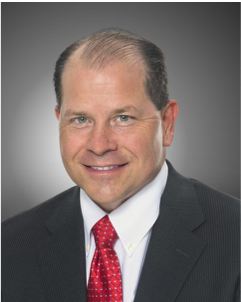 Dan Nale, Ph.D., P.E.
Dan Nale, Ph.D., P.E.
Professor of Practice
What value does a real-world project bring to the students?
When college students experience real-world projects from a perspective of educational safety, security, and support inherent to classroom settings, they build confidence, learn collaboration skills, and develop risk-management tactics in a low-risk environment. Engineering talent recruiters and hiring managers, even for entry-level positions, seek graduates whose education includes professional interactions and learning experiences gained through real-world projects.
How do you decide which projects to work on?
Design projects selected by faculty must provide opportunities for students to deepen their understanding of basic engineering design principles. This objective is non-negotiable. As a retired engineering executive, I’ve consulted with companies racing to be first to market with Electric Vertical Take Off and Landing (eVTOL) vehicles. Trade and financial literature related to eVTOLs highlight that infrastructure at airports and inside cities must be developed concurrently with the aerospace and battery technology. This infrastructure requires students to understand and implement basic engineering principles; however, the excitement we see as students study flying cars and watch futuristic trade videos inspires students to design innovative solutions that have a far different impact than traditional civil engineering infrastructure and built environment projects.
How did this project prepare students for professional practice?
The students interacted with experts in many different fields of civil engineering. Experts that could eventually be their mentors, team leaders, colleagues, and professional network contacts. The two-semester capstone design course sequence also provided incredible expert professional engineering interactions for the students to understand the importance of becoming a professional engineer.
What advice do you have for other programs wanting to add similar collaborative projects to their curriculum?
Look for projects where engineering principles can be applied with relevance and cutting-edge technology. Reach out to middle managers and experts on the topic to engage real-life leaders before moving forward, so you can ensure student interaction includes real-world engineering and industry professionals. Finally, collaborate and talk to practicing engineers and engineering professors to discover the latest technology opportunities in which they’re involved. Consider this input when creating curriculum for the senior capstone design.
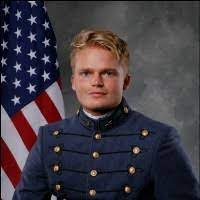 Cadet Collier Summers, a 2022 graduate of Citadel Civil Engineering is now a Water/Wastewater Engineer I with AECOM
Cadet Collier Summers, a 2022 graduate of Citadel Civil Engineering is now a Water/Wastewater Engineer I with AECOM
What did you like best about participating in this project?
I especially liked and learned the most from addressing business criteria required for a real-world engineering project. Applying what I’ve learned in the past four years was rewarding, and I gained a much better understanding of interrelated engineering disciplines. In the real world, even if someone knows a great deal about engineering, the challenge of winning and delivering successful projects contains the inherit risk of running the engineering firm out of business. Since the proposed vertiport project was a new and innovative engineering facility, civil engineering students relied upon an external advisory board comprised of practicing engineers, national experts, jurisdictional organizations, and political leaders. Students had to demonstrate how the proposed project provided an effective design and economically beneficial solution. This high-level project requirement was very challenging to engineering students as our curriculum focuses largely on foundational engineering concepts and design procedures with less emphasis on business principles. Another great aspect of participating in this project was competing against other student teams to produce the best electric Vertical Takeoff and Landing (eVTOL) infrastructure design project. Students were very motivated to prove to the external advisory board that their recommended project design provided the best solution for the proposed site location. I believe completing the eVTOL project comprises a distinguishing characteristic of my civil engineering degree from The Citadel.
What did you learn?
This project was definitely the most beneficial stepping-stone to launch my career into the real world of engineering consulting. I learned a great deal about how a project comes together, preparation of cost estimates, interacting with clients/owners, consulting with practicing engineers, presenting to an advisory board, transportation design, geotechnical design, structural design, environmental engineering, and collaboration with construction engineers.
How did the participation of professional engineers improve the experience?
Engineering students traditionally learn though academic examples and expect everything to be perfect; therefore, many questions were raised through the design process to address real-world constraints. Having professional engineers to answer questions and provide guidance to student design teams was crucial to my learning experience. The Citadel has outstanding professors who have their professional engineering licenses, in addition to real world experience. The advisory board included many other professional engineers and national experts who helped tremendously with the project. Without their practical knowledge and perspective, I would not have had the same project experience.
What do you think the engineers learned from working with students on this project?
I believe participating professional engineers and industry experts learned that the future generation of civil engineers will not let the world down. Especially the ones wearing a gold ring on their right hand, emblematic of Citadel graduates who adhere to a rigorous honor code. I believe engineers serving on the advisory board were surprised that our education gave us this experience and members of the advisory board stated that they had high hopes for our careers in the real world of professional engineering practice. As a student, it’s great to see that all the hard work I have invested in my civil engineering education for the past four years will pay off to make the world a better place.
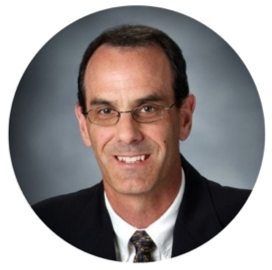 Gary Siegfried, P.E. is the Program Manager for the South Carolina Aeronautics Commission in Columbia, South Carolina.
Gary Siegfried, P.E. is the Program Manager for the South Carolina Aeronautics Commission in Columbia, South Carolina.
Why did you get involved with the project?
I first became involved with The Citadel when Dr. Dan Nale reached to me to assist on the American Society of Civil Engineers (ASCE) Aviation Infrastructure Report Card for the state of South Carolina. After the successful completion of that task, Dr. Nale asked if I would assist with The Citadel’s Civil Engineering Senior Capstone Design Project. As an airport engineer for 30 years, the opportunity to be engaged with engineering students as they were researching advanced air mobility, the newest segment of the aviation industry, was too interesting to pass up. I thought it would be a great chance for me to learn about this emerging Advanced Air Mobility (AAM) travel mode along with The Citadel engineering students.
How did you assist the students in the project?
My primary role was in providing baseline information to assist students on the engineering portion of the project. I coordinated with the airport manager and his engineering consultant to obtain CADD base maps for the airport that was selected for the case study project location. I also provided students with relevant FAA design guidance and in class presentations on FAA processes and FAA funding procedures. I served as guest lecturer, participated in advisory boards, and evaluated student team project presentations at the end of each semester.
What did you learn from working with the students?
I learned that the students are creative, intelligent, and hard working. The great learning experiences that they obtained from working on this project (teamwork, schedule management, communication, critical thinking, networking) will carry on with them throughout their engineering careers. I also learned about the AAM transportation sector, it’s anticipated applications, and challenges the aviation industry will face in adapting to the advent of this new technology.
What did you want students to learn from working with you?
When civil engineering students think about business sectors and professional fields where they could find rewarding careers, airport engineering is not one that is typically identified by graduates. I wanted Citadel students to learn that airfields, terminals, and related support facilities comprise crucially important components of our national transportation system where engineering graduates can find outstanding and interesting career opportunities. I also wanted students to know that if someone has a love for aviation, there are many ways to be involved in this challenging profession without being a pilot or aircraft manufacturer.
